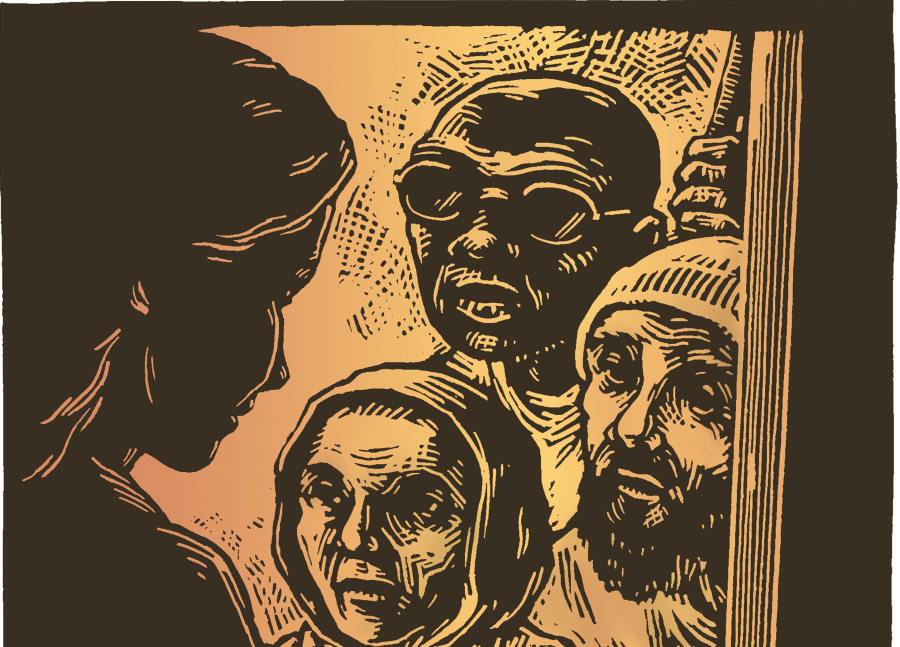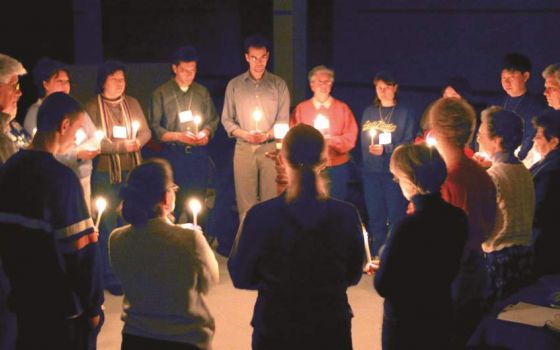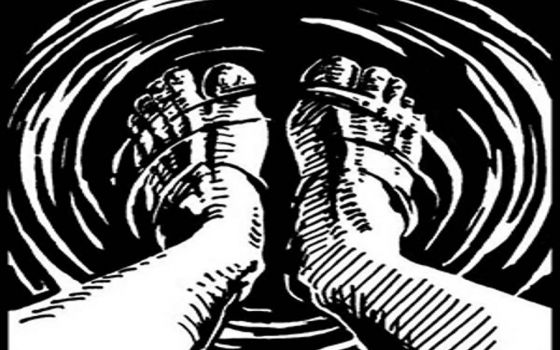
(Julie Lonneman)
Many Lents ago, the children invited a friend for supper. I apologized for the meager Friday fare: made-from-scratch macaroni and cheese with three or four different grated cheeses, fruit, homemade bran muffins and jam. When he had eaten, our young friend, Jordan, pushed his plate away and said, "Wow, that was like the best macaroni and cheese I ever ate! When it's a fast day at my house we, like," he stopped, searching for the right words, "we, you know, don't eat."
This is a story my children are fond of telling. My preference for feasting over fasting is legendary. My ability to turn a meatless meal — a "fast" — into a delight for the palate is renowned. It's how I earned the title "Miss Wretched Excess of 1952." But this Lent, fasting takes on new meaning for me. My daughter and her husband and their two children, 3 and 5 years old, are in Haiti. They live in a village called Rosier on the southern coast of Haiti. The four hurricanes last summer struck the village and destroyed hundreds of acres of land. Some of it washed out to sea. Much of it was left covered with a nutrient-poor clay unfit for planting crops.
There is a market each week in Rosier. Our daughter tells us that the same items are always and only for sale: Oil, spaghetti, rice, beans, chicken bouillon, onions, soap, plastic barrettes and candy. She says local remedies and plastic bags of powdered amoxicillin are also available at a price. Their neighbor, Madame Michelin, makes and sells the clay cakes that those who cannot afford rice and beans buy and eat. The cakes are made of clay, salt and oil. They quiet hunger pangs and fill the bellies of the starving. The clay is contaminated by human and animal waste, so these cakes also spread the diseases that kill most Haitians before the age of 50.
There is more variety to be had in the markets of Port Salud and Les Cayes, but gasoline costs anywhere between $8 and $13 a gallon, making the trip to these markets impossible for most citizens of Rosier. The average annual income in Haiti is $50 a year, or around five gallons of gas.
Our family there lives in a concrete house. They have no running water and no electricity. They eat a spare diet of beans and rice, chicken and the coconuts and bananas that grow just outside their door. Our children are unquestionably the wealthiest people in town. They have a solid roof. They have screens on their windows and mosquito netting for their beds. They eat every day. They take vitamins. They have been inoculated against everything from typhoid to rabies. They take anti-malarial medication. When friends and supporters go down, they bring bags packed with beef jerky and Spam and foil packets of tuna. They are well-nourished, and so much less susceptible to disease. They have a water filter and plenty of bleach. They have American passports.
Our children have modest goals in a land where modest improvements can mean the difference between life and death. They go door to door meeting villagers and inviting them to join a cooperative to raise and breed goats. For a small sum, which can be paid out over years, each member receives three pregnant goats. The cooperative members agree to have their goats examined and inoculated by a veterinarian. They agree not to feed their goats human or animal waste. They agree to return a kid to the cooperative so that other families can be brought into the association.
Owning a goat in Haiti usually means the family eats well for a number of days. The Goat Project aims to help families build herds: Goats to eat and goats to sell. Goats to sell might mean a tin roof rather than a thatched one. It might mean a child enrolled in school. It might mean a concrete house and mosquito netting for the people who sleep there.
Advertisement
Then there are the dreams. Haitians don't drink milk and seldom eat cheese. There is no refrigeration; milk spoils quickly in the tropical heat. Our daughter hopes to teach members of the cooperative to feed the daily goats' milk to their children. She hopes to teach them how to make goat cheeses that can be mixed and eaten the same day.
I'm mindful of Saint Jerome's words this season. "When the stomach is full," he cautions, "it is easy to talk of fasting." My stomach is full, and overfull. But the Lenten fast, I remember, is neither a diet nor an attempt to impress God with our piety. It is a call — again, again, yet again — to practice the works of mercy, to live as who we are: the sons and daughters of Christ, the brothers and sisters of the sons and daughters of Haiti.
Knowing the commands of the Christ,
Let this be our way of life:
Let us feed the hungry,
Let us give the thirsty drink.
— Byzantine vespers
Editor's note: This reflection was originally published in the February 2014 issue of Celebration. Sign up to receive daily Lenten reflections.








